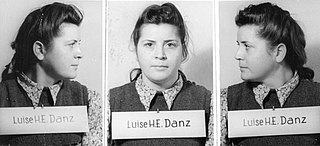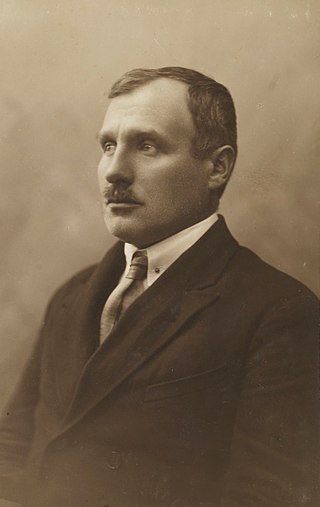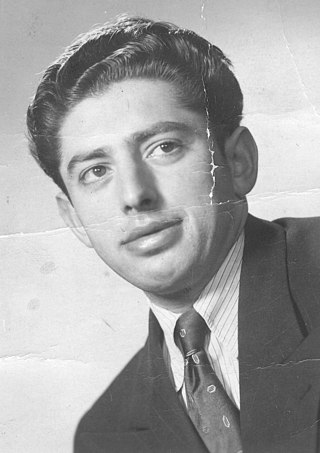The Auschwitz concentration camp was a complex of over 40 concentration and extermination camps built and operated by Nazi Germany in occupied Poland during World War II and the Holocaust.
Contents
Auschwitz may also refer to:
The Auschwitz concentration camp was a complex of over 40 concentration and extermination camps built and operated by Nazi Germany in occupied Poland during World War II and the Holocaust.
Auschwitz may also refer to:

Auschwitz concentration camp was a complex of over 40 concentration and extermination camps operated by Nazi Germany in occupied Poland during World War II and the Holocaust. It consisted of Auschwitz I, the main camp (Stammlager) in Oświęcim; Auschwitz II-Birkenau, a concentration and extermination camp with gas chambers; Auschwitz III-Monowitz, a labour camp for the chemical conglomerate IG Farben; and dozens of subcamps. The camps became a major site of the Nazis' Final Solution to the Jewish question.

Oświęcim is a town in the Lesser Poland province of southern Poland, situated 33 kilometres (21 mi) southeast of Katowice, near the confluence of the Vistula (Wisła) and Soła rivers. The town is known internationally for being the site of the German Nazi-built Auschwitz concentration camp during World War II, when Poland was occupied by Nazi Germany.

Luise Danz was a Nazi concentration camp guard in World War II. Danz was captured in 1945 and put on trial for crimes against humanity at the Auschwitz trial in Kraków, Poland. She was sentenced to life imprisonment in 1947, but released due to general amnesty on 20 August 1957.

Norbert Barlicki was a Polish publicist, lawyer and politician of the Polish Socialist Party (PPS).

Fritz Klein was a Romanian-German Nazi doctor and war criminal, hanged for his role in atrocities at Auschwitz concentration camp and Bergen-Belsen concentration camp during the Holocaust.

Monowitz was a Nazi concentration camp and labor camp (Arbeitslager) run by Nazi Germany in occupied Poland from 1942–1945, during World War II and the Holocaust. For most of its existence, Monowitz was a subcamp of the Auschwitz concentration camp; from November 1943 it and other Nazi subcamps in the area were jointly known as "Auschwitz III-subcamps". In November 1944 the Germans renamed it Monowitz concentration camp, after the village of Monowice where it was built, in the annexed portion of Poland. SS Hauptsturmführer (Captain) Heinrich Schwarz was commandant from November 1943 to January 1945.

The Auschwitz Protocols, also known as the Auschwitz Reports, and originally published as The Extermination Camps of Auschwitz and Birkenau, is a collection of three eyewitness accounts from 1943–1944 about the mass murder that was taking place inside the Auschwitz concentration camp in German-occupied Poland during the Second World War. The eyewitness accounts are individually known as the Vrba–Wetzler report, Polish Major's report, and Rosin-Mordowicz report.

The issue of why the Allies did not act on early reports of atrocities in the Auschwitz concentration camp by destroying it or its railways by air during World War II has been a subject of controversy since the late 1970s. Brought to public attention by a 1978 article from historian David Wyman, it has been described by Michael Berenbaum as "a moral question emblematic of the Allied response to the plight of the Jews during the Holocaust", and whether or not the Allies had the requisite knowledge and the technical capability to act continues to be explored by historians. The U.S. government followed the military's strong advice to always keep the defeat of Germany the paramount objective, and refused to tolerate outside civilian advice regarding alternative military operations. No major American Jewish organizations recommended bombing.

Karl Fritzsch was a German member of the Nazi paramilitary organization, the Schutzstaffel (SS) from 1933 to 1945. He was a deputy and acting commandant at the Auschwitz concentration camp. According to Rudolf Höss, Fritzsch first suggested using poisonous gas Zyklon B for the purpose of mass murder.

Franz Hößler, also Franz Hössler was a Nazi German SS-Obersturmführer and Schutzhaftlagerführer at the Auschwitz-Birkenau, Dora-Mittelbau and Bergen-Belsen concentration camps during World War II. Captured by the Allies at the end of the war, Hößler was charged with war crimes in the First Bergen-Belsen Trial, found guilty, and sentenced to death. He was executed by hanging at Hameln Prison in 1945.
Tadeusz Sobolewicz was a Polish actor, author, and public speaker. He survived six Nazi concentration camps, a Gestapo prison and a nine-day death march.

The Auschwitz-Birkenau State Museum is a museum on the site of the Nazi German Auschwitz concentration camp in Oświęcim, Poland.

Witold's Report, also known as Pilecki's Report, is a report about the Auschwitz concentration camp written in 1943 by Witold Pilecki, a Polish military officer and member of the Polish resistance. Pilecki volunteered in 1940 to be imprisoned in Auschwitz to organize a resistance movement and send out information about the camp. He escaped from Auschwitz in April 1943. His was the first comprehensive record of a Holocaust death camp to be obtained by the Allies.
Franz Hermann Johann Maria Freiherr von Bodmann, sometimes written as Bodman was a German SS-Obersturmführer who served as a camp physician in several Nazi concentration camps.
Adolf Gawalewicz was a Polish jurist and writer known for his memoirs of his years at Auschwitz and other Nazi concentration camps.
The Auschwitz Combat Group was international left-wing resistance organization in Auschwitz concentration camp.
Danuta Czech was a Polish Holocaust historian and deputy director of the Auschwitz-Birkenau State Museum in Oświęcim, Poland. She is known for her book The Auschwitz Chronicle: 1939–1945 (1990).

Shimson Kleuger was a Polish Holocaust survivor and the last openly Jewish person to live in the town of Oświęcim, Poland, from 1962 until his death in 2000. Although Oświęcim had a Jewish community making up over half the town with 8,000 people before 1939, all other known Jewish residents, including the rest of Kleuger's family, had either fled in the large-scale exodus shortly before the occupation of Poland by Nazi Germany during World War II or were deported to concentration camps by Nazi authorities. Of the few survivors, Kluger was the only Jewish resident to return to Oświęcim, for which he became known as "The Last Jew in Auschwitz". This was especially prominent due to the nearby presence of the infamous Auschwitz concentration camp.
Censorship in Auschwitz concentration camp followed the broader pattern of political and cultural suppression in the Third Reich. General censorship in camp occurred in a variety of daily life topics and was more stringent than the outside world. The main focus was monitoring prisoners’ written correspondences, which was under strict censorship by the SS garrison on camp. Starting from 1939, the Mail Censorship Office which was directly subordinated to the commandant's office took the main responsibility for checking the contents of letters and parcels as well as receiving and sending correspondences. The SS personnel would cut or blacken suspicious content that was considered inappropriate i.e. any information regarded the true living condition of the concentration camp or prisoner's health status. Even worse, some prisoner's letters were never sent out to their family members.